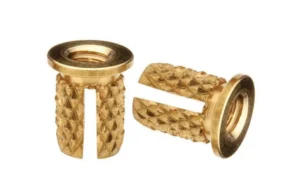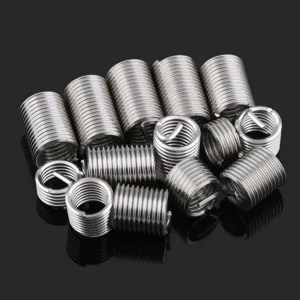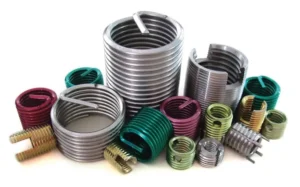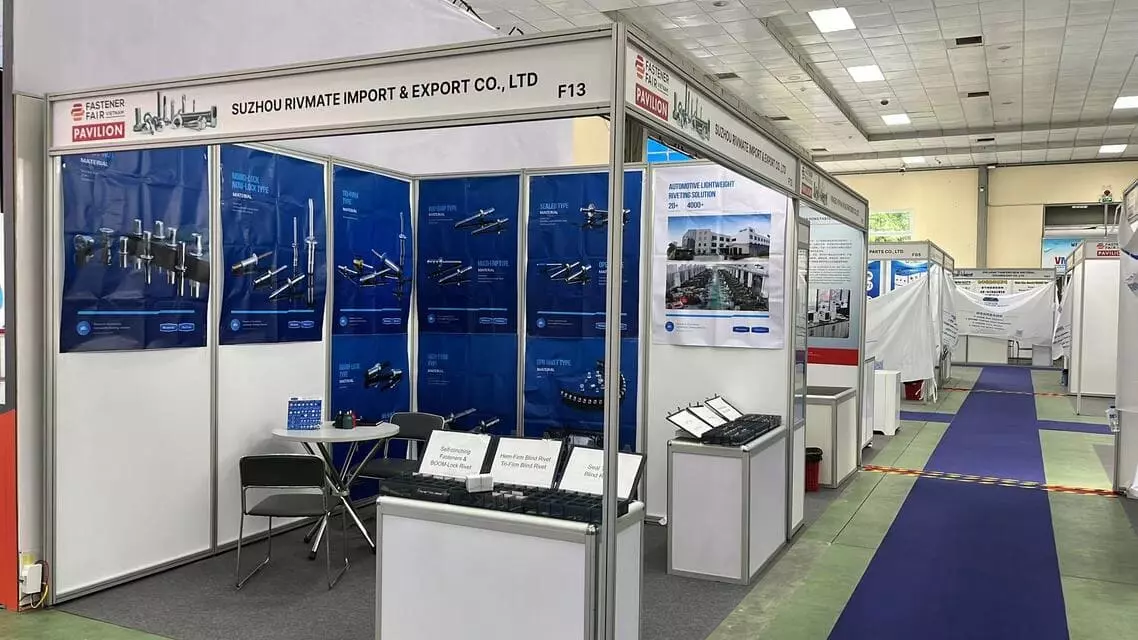Are Rivnuts Stronger Than Screws?
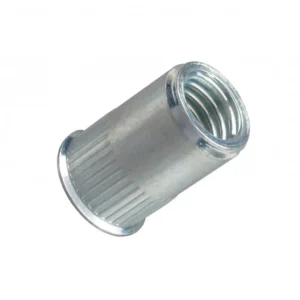
Leading Rivet Nut Manufacturer and Supplier in China
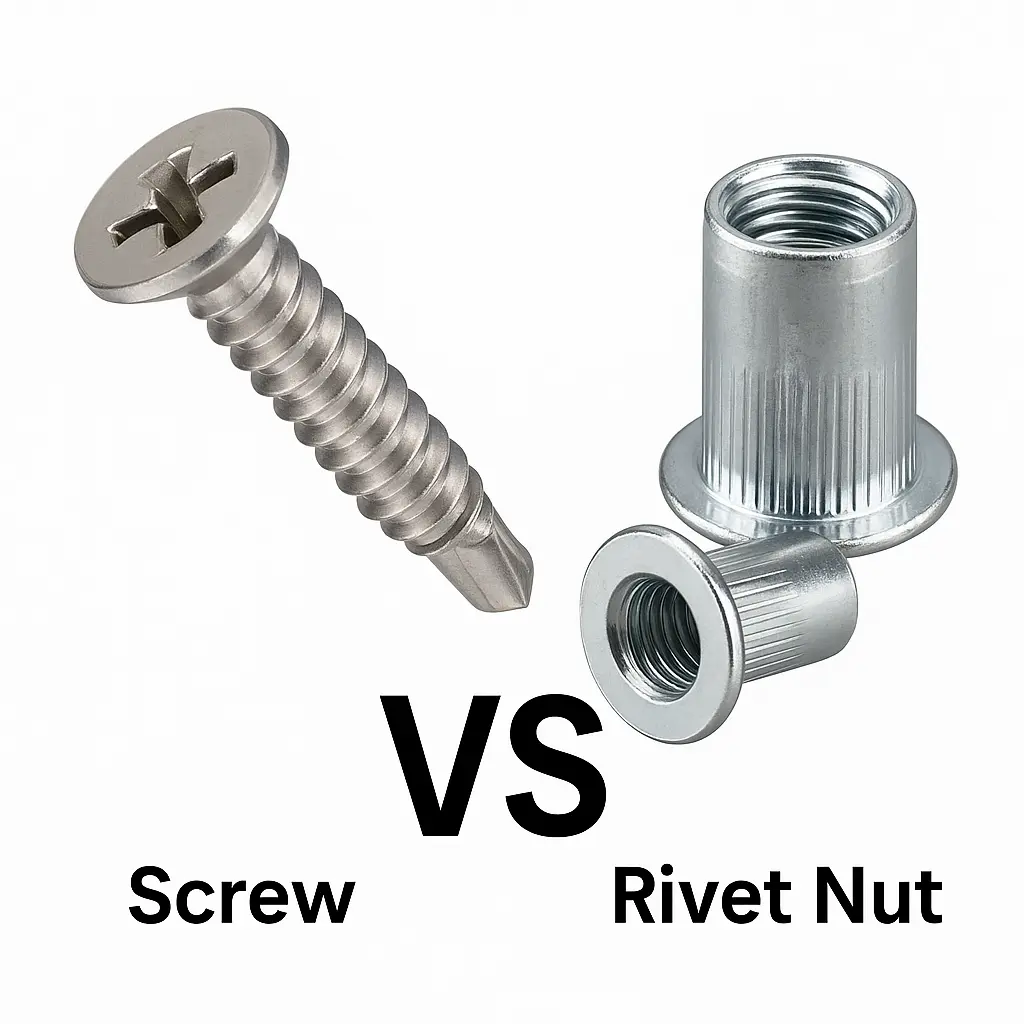
When it comes to choosing the right fastener for your project, strength, durability, and installation conditions are critical factors. Rivnuts (riveted nuts) and traditional screws are both popular options, but they serve different purposes depending on the application. In this article, we’ll explore the key differences between Rivnuts and screws, comparing their tensile strength, torque resistance, shear performance, and overall reliability—helping you determine which fastener is better suited for your specific needs.
Table of Contents
What Are Rivnuts?
Rivnuts, also known as rivet nuts, are specialized fasteners designed to create strong internal threads in thin-wall, hollow, or backside-inaccessible materials. The term “blind” refers to their ability to be installed from one side only, making them especially valuable in applications where rear access is restricted. Rivnuts combine the benefits of both rivets and threaded fasteners, serving as a reliable alternative to traditional nuts or weld nuts.
A rivnut typically consists of the following components:
Cylindrical body: May feature knurled or hexagonal designs to prevent rotation, and fits into a pre-drilled hole in the base material.
Internal thread: Accommodates screws or bolts, enabling a strong threaded connection.
Deformation zone: The rear section of the rivnut deforms during installation to create a secure grip.

Detailed Mechanism:
When installed using a specialized tool (such as a rivet nut gun), the rear end of the rivnut expands outward, forming a “mushroom-like” flange on the blind side of the panel. This plastic deformation ensures a tight grip and long-term mechanical strength. Unlike weld nuts, rivnuts do not require high heat, thereby preserving surface coatings and base material integrity. This makes them suitable for coated surfaces and non-weldable materials.
b. Installation Method
Rivnuts are installed through the following key characteristics:
Blind-Side Installation
No need to access the back of the workpiece. Ideal for enclosed areas, structural tubing, or internal frames where only one side is reachable.Tail-End Expansion Forming
A pulling force applied via a mandrel tool expands the rivnut’s rear, forming a clamping flange behind the material and securing it against rotation or loosening.No Tapping or Welding Required
Rivnuts provide immediate internal threading in a pre-drilled hole, eliminating the need for tapping or welding. This streamlines the assembly process and reduces labor and equipment costs.Compatible with Various Tools
Rivnuts can be installed using manual, pneumatic, or automated tools, making them adaptable for both repair work and high-volume production.
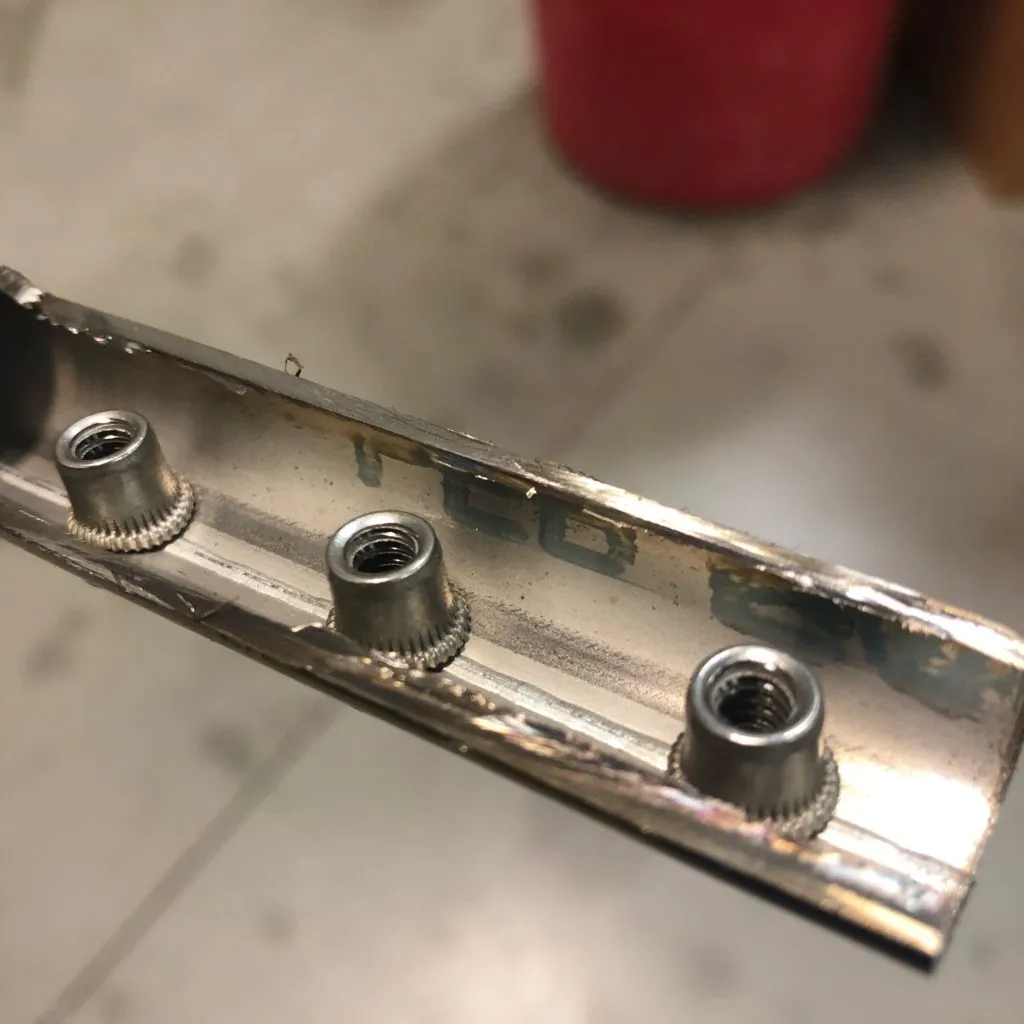
Thin Sheet Metal Joining
In sheet metal (1.0mm–5.0mm thick), where standard nuts are ineffective, rivnuts provide secure threads—ideal for electronics housings, machine panels, and enclosures.Hollow or Enclosed Structures
Structures like square tubing, round tubing, or C-channels cannot accommodate nuts or welds from the backside. Rivnuts solve this by offering strong internal threads from one side. Common in automotive frames, bicycle chassis, and metal furniture.
High-Strength Thread Requirements
Rivnuts are designed to withstand high tensile and shear loads. They’re ideal for parts that need repeated disassembly or experience vibration, such as engine covers, access panels, and industrial automation equipment.Enhanced Threading in Soft Materials
For plastics, fiberglass, or composite panels, rivnuts provide durable threads and prevent thread stripping or pull-out—issues often seen with traditional screws in soft substrates.
What Are Screws?
Screws are one of the most common mechanical fasteners, used to join two or more parts together by means of their threaded structure. Compared to rivnuts, screws have broader applications and a wide range of designs, offering solutions from lightweight assembly to heavy-duty fastening. Their primary feature is the rotational engagement method, allowing for removable and reusable connections across various materials.
a. Working Principle
The basic components of a screw include:
- Threaded Shaft: A rod with external threads, which provides the gripping and fastening function.
- Head Type: Comes in various forms such as Phillips, hex socket, hex head, flat head, etc., and serves as the driving interface.
- Point Design: Some screws feature sharp tips (for self-tapping into materials), while machine screws often have flat ends and require pre-threaded holes.
Common Types of Screws:
Self-tapping Screws: Used for thin sheets, plastics, and other soft materials. They cut their own threads during installation.
Machine Screws: Typically used in metal assemblies and require pre-threaded holes or a nut for fastening.
Wood Screws: Designed for wood structures; they have a coarse thread and sharp tip.
Self-drilling Screws: Equipped with a drill-like tip that can create its own pilot hole while fastening.
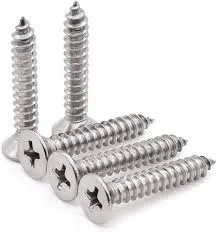
b. Installation Method
Screws are installed by rotational driving, typically with a screwdriver (manual or powered) or automated tools. Common methods include:
- Pre-tapped Hole + Machine Screw
- Used in metals or hard materials where threads are pre-machined.
- Offers high accuracy and strength, ideal for applications requiring frequent disassembly.
- Direct Insertion (Self-tapping)
- Self-tapping screws cut into the material without the need for pre-threading.
- Fast and convenient, but repeated use may weaken the connection as materials wear down.
- Screw + Nut Combination
- In materials without internal threads, a nut is used on the opposite side to secure the connection.
- Requires rear-side access and is not suitable for blind or enclosed structures.
c. Common Applications
Due to their wide variety and adaptability, screws are widely used in many structural and mechanical connections:
- Furniture and Wood Structures
- Wood screws are widely used in panel connections, furniture assembly, flooring, and more.
- Easy to install and remove, making them popular in DIY and construction projects.
- Electronic Device Assembly
- Small machine screws are used in laptops, phones, instruments, and enclosures.
- Offer precision and compactness, ideal for lightweight components.
- Sheet Metal / Metal Structures
- Self-tapping or self-drilling screws are used for quick metal sheet assembly in AC units, control cabinets, and vehicle panels.
- Suitable for medium-to-low strength connections with high installation efficiency.
- Automotive and Industrial Equipment Maintenance
- Machine screws combined with nuts are common in mechanical housings and motor bases.
- Enable later disassembly for maintenance and replacement.
Summary Comparison:
| Item | Rivnuts | Screws |
| Installation Method | Blind-side, tail-end expansion | Usually requires both sides or direct tapping |
| Suitable Structures | Closed chambers, thin-wall materials | General materials, especially wood and plastic |
| Reusability | Easy to disassemble, secure connection | Self-tapping less reusable, machine screws reusable |
| Strength | Strong tensile and shear after setting | Depends on material and thread quality |
| Pre-threading | Not required | Required for machine screws, not for self-tapping |
Are Rivnuts Stronger Than Screws?
1. Tensile Strength
Tensile strength refers to the maximum axial load a fastener can withstand before failure.
- Rivnuts: After installation, the tail end plastically deforms and grips the backside of the panel, creating a large contact surface. This makes rivnuts especially effective in thin metal sheets. Stainless steel rivnuts (M6 size) can reach tensile strengths of 1200–1500 N.
- Screws: Their tensile strength depends largely on material and thread engagement depth. In plastic or wood, thread strength is limited, resulting in lower tensile performance. In pre-tapped metal holes, strength is significantly higher.
Summary: In thin panels or hollow structures, rivnuts often offer better tensile strength than screws.
2. Torque Resistance
Torque resistance measures how well a fastener resists loosening from rotational forces.
- Rivnuts: When properly installed—especially hexagonal or knurled versions—they offer excellent anti-rotation performance. However, oversized or unclean holes may result in slippage.
- Screws: Machine screws threaded into metal or used with nuts have high torque resistance. Self-tapping screws in softer materials are prone to stripping or loosening over time.
Summary: Hex Rivnuts + properly sized holes usually provide superior torque resistance.
3. Shear Strength
Shear strength refers to the fastener’s ability to withstand lateral (side) loads.
- Rivnuts: Shear resistance depends on the contact area between the bolt and the nut body. Ideal for transmitting load across joined sheet materials. M6 carbon steel closed-end types can handle 1000–1300 N.
- Screws: High shear strength in metal, but in wood or plastic, performance is limited by the base material’s engagement strength.
Summary: Both types offer good shear strength, depending on materials and design. Rivnuts perform more reliably in soft materials.
4. Vibration Resistance
Vibration resistance is critical in applications with constant movement or impact.
- Rivnuts: Their mechanical rivet-like design resists loosening under vibration, making them ideal for automotive, railway, and aerospace applications.
- Screws: Susceptible to loosening due to material compression or vibration. Often require anti-loosening features like spring washers, thread-locking compounds, or lock nuts.
Summary: Rivnuts naturally provide better vibration resistance, especially in dynamic environments.
5. Reusability
Whether the fastener can be removed and reused multiple times without performance loss.
- Rivnuts: Once riveted, they function like a built-in nut. As long as the threads and base are intact, they support repeated bolt insertions.
- Screws: Machine screws are reusable. However, self-tapping screws degrade the base material threads with each use, leading to poor retention.
Summary: Rivnuts are comparable to machine screws and far superior to self-tapping screws in reusability.
6. Post-Installation Stability
Whether the joint remains tight and secure during long-term use.
- Rivnuts: Form a mechanically locked connection during installation. Excellent in resisting loosening and shifting over time, especially in thin-wall or hollow materials.
- Screws: Stability depends on material and backing support. Without reinforcement or lock features, they can loosen due to stress or thermal expansion.
Summary: In enclosed, vibrating, or soft-material setups, rivnuts deliver superior long-term joint stability.
Example: Performance Comparison of M6 Screw vs M6 Rivnut
Below is a reference table comparing key performance metrics—tensile strength, shear strength, and torque resistance—for M6 screws and M6 rivnuts. Data is based on typical engineering tests and public technical specs:
M6 Screw vs M6 Rivnut Performance Comparison

| Performance Metric | M6 Machine Screw (Steel Nut) | M6 Self-Tapping Screw (Plastic/Aluminum) | M6 Rivnut (Carbon Steel, Open End) | M6 Rivnut (Stainless Steel, Closed End) |
| Tensile Strength (N) | 10,000 – 12,000 | 800 – 1,200 | 5,000 – 6,500 | 6,500 – 8,000 |
| Shear Strength (N) | 7,000 – 8,500 | 600 – 1,000 | 4,000 – 5,500 | 5,500 – 6,800 |
| Torque Resistance (Nm) | 10 – 12 | 1.5 – 2.5 | 6 – 8 | 8 – 10 |
Notes:
- M6 Machine Screws: Offer the highest strength when used with a steel nut or tapped metal hole, but require access from both sides.
- M6 Self-Tapping Screws: Ideal for plastic or thin aluminum but limited in strength—not suitable for high-load applications.
- M6 Rivnuts (Carbon Steel, Open End): Cost-effective, suitable for medium-load, one-sided installations.
- M6 Rivnuts (Stainless Steel, Closed End): Best for sealed, corrosive, or outdoor applications, offering high strength and reliability.
When Should You Use Rivnuts Instead of Screws?
a. When are Rivnuts the better choice?
When working with thin sheet metal or shell structures where traditional threads are difficult to form or maintain securely.
In closed or inaccessible areas where only one side of the material is accessible during installation.
When the joint requires frequent assembly and disassembly while maintaining thread integrity over time.
When the base material is soft or composite, and there is a risk of damaging the threads or losing holding power with screws.
When sealing and corrosion resistance are important—especially when using closed-end rivet nuts in harsh or humid environments.
b. When are traditional screws still preferred?
For thicker materials where threads can be cut directly or where both sides of the joint are accessible to use a nut and bolt combination.
In high-speed, high-volume production environments where low cost and fast installation are priorities, and moderate strength is sufficient.
For permanent or semi-permanent joints that do not require frequent disassembly—screws are simpler and more economical.
When working with hard metals, and self-tapping screws can provide adequate holding strength without additional components.
c. Recommendations for high-strength, vibration-resistant joints:
Use high-quality closed-end steel rivet nuts for improved tensile and shear performance thanks to their mechanical anchoring design.
Always pair with proper installation tools to ensure secure deformation and avoid strength loss due to poor installation.
Choose the right bolt length to prevent internal interference and ensure full thread engagement.
For extreme vibration conditions, consider using lock bolts or bolts with anti-loosening features along with rivet nuts.
In applications that require frequent disassembly, rivet nuts offer better thread durability and reuse performance than self-tapping screws.
What Are the Pros and Cons of Rivnuts vs Screws?
| Feature | Rivnuts | Screws |
| Installation | One-side, needs special tools | Both sides, simple tools |
| Tensile Strength | High, strong grip | Varies, weaker in thin materials |
| Shear Strength | Strong, good load distribution | Depends on material and threads |
| Torque Resistance | Good, resists loosening | Can loosen without locking |
| Vibration | Excellent resistance | Prone to loosening |
| Reusability | Reusable but limited | Reusable, but threads wear |
| Material Use | Thin, soft, hollow materials | Thick, solid materials |
| Sealing | Closed-end rivnuts seal well | No sealing, needs extra parts |
| Cost & Tools | Higher cost, special tools needed | Lower cost, easy tools |
| Applications | Automotive, aerospace, electronics | Construction, general use |
Conclusion- Are Rivnuts Stronger Than Screws?
Rivnuts (rivet nuts) are not necessarily stronger than screws in all situations, but they offer distinct advantages in specific applications—especially in the following scenarios:
Thin Sheet Connections: Traditional screws struggle to form strong threads in thin materials, often leading to stripping or pull-out. Rivnuts, however, securely anchor themselves by deforming behind the panel, providing a durable threaded connection.
Single-Side Installation: When only one side of the workpiece is accessible—such as in closed profiles or box structures—Rivnuts enable quick, reliable installation from just one side, whereas standard screws cannot be used effectively.
High-Vibration Environments: Once paired with a bolt, Rivnuts resist loosening even under vibration. Compared to screws without locking features, Rivnuts offer superior vibration resistance, making them ideal for use in automotive chassis, machinery, and dynamic structures.
Even Load Distribution: Due to the way Rivnuts deform and anchor themselves, they create a wraparound load-bearing structure. This results in more stable tensile and shear performance, especially in applications with uneven or multidirectional forces.
That said:
If the material is thick enough, accessible from both sides, and frequent disassembly is required, traditional screws may be more suitable.
If cost and installation simplicity are top priorities, screws often provide better overall economy.
FAQs
Are Rivnuts stronger than traditional screws?
Not always. Rivnuts offer excellent strength in thin materials where screws cannot form threads, especially in tensile and shear applications. However, in thick materials where deep threads can be tapped, traditional screws may offer higher torque and clamping force. The “stronger” option depends on the application scenario.
Can Rivnuts be reused like screws?
Yes, but with limitations. Rivnuts themselves are typically not removed once installed; however, the bolts inserted into them can be removed and reinstalled repeatedly without damaging the rivnut, making them suitable for serviceable joints. In contrast, screws installed directly into softer materials may degrade the threads over time.
Which is more suitable for high-vibration environments?
Rivnuts tend to perform better in vibration-prone environments when combined with locking bolts or washers, as the internal threads are held by a mechanical deformation into the base material. Screws may loosen more easily without proper locking mechanisms.
Are special tools needed to install Rivnuts?
Yes. Installing Rivnuts requires rivet nut tools (manual, pneumatic, or electric), which pull the threaded shank and deform the backside to create a grip. Screws typically need only a screwdriver or drill, making them easier for low-volume or home use.
What materials can Rivnuts be used with?
Rivnuts are versatile and work well with metal sheets, composites, plastics, and even carbon fiber. They are especially valuable where access is limited to one side, unlike screws that generally require access from both sides for thread tapping or nut holding.
Do You Have Any Questions?
Let Us Solve Your Problem
Rivetfix- Leading Fastener Manufacturer

As a leading fastener manufacturer in China with more than 15 years in the industry, Rivetfix are committed to providing first-class quality fasteners and responsive services to the world. We offers a wide range of rivet nuts and clinch nuts designed to meet the unique demands of your projects. Rivetfix ensures you have the right solution for every application. Choose Rivetfix for versatile, cost-effective, and durable fastening solutions tailored to your specific needs. In addition, we can also provide customized rivet nuts service and clinch nuts according to your requirements.
Contact us now for more information and customization options on Rivet Nuts!
Get High Quality Rivet Nuts Quote!
Send Your Rivet Nut Request
For more than 20 years, Rivetfix has helped customers solve many rivet nuts sourcing needs and technical challenges.
Have a question? Contact us and we’ll provide you with the perfect solution.


